*the triptych central part painted between 1612 and 1614. This painting is the second greatest masterpiece that Rubens made for the Notre-Dame Cathedral of Antwerp in Belgium, next to the Erection of the Cross. This painting was cordered in 1611 by the Arquebusiers' Brotherhood of whose patron saint is Saint Christopher.
The three elements of the triptych describe successively the Virgin Mary Visitation, the Descent from the Cross and the Jesus presentation to the Temple.
Although made in an essentially Baroque style, this oil on canvas is closely linked to the Venetian tradition and probably influenced by the works of Daniele da Volterra, Baroccio and Lodovico Cigoli among others. In its composition and use of light, the triptych also recalls the Caravaggio Roman period.
This painting was initially in Antwerp Cathedral until Napoleon took it, as well as the Erection of the Cross, to Paris. Finally, these two triptychs were brought back to Antwerp in 1815.
*Our stained glass window is here completely similar to the The Descent from the Cross version painted around 1616-1617 for the Capuchin convent Chapel of Lille . This large composition, painted by Rubens around 1616-1617, in vertical format (425 × 295 cm) and executed in oil on canvas, is now kept at the Palais des Beaux-Arts in Lille.
The Descent from the Cross (Rubens, 1617) - Wikipedia; Please check the annoucement last photo
"Ten figures are depicted on the painting, including the Christ in the center of the composition. We can see Nicodemus and Joseph of Arimathea, both members of the Sanhedrin, detaching from the cross with the help of a servant the Christ body, supported by John. At the foot of the cross are the three Marys, the Virgin Mary, Mary Magdalene and Mary Cleophas. From the left, an old woman, who does not appear in the preparatory sketch, enters the scene.
On the background, a character descends the ladder on which Joseph is perched.
The dress drape Madeleine, the copper basin, the crown of thorns, the blood-stained perizonium, the sponge and the nails form a still life at the bottom of the painting.
Designed for an altarpiece that unfolds above the altar, the painting illustrates the theme of the Eucharist.
First by the representation of the altar tablecloth, symbolized by the shroud, on which the Christ body descended into the priest outstretched hands who celebrates the Eucharist. Then, by the position of the figures, the lips of Mary Magdalene placed on the Christ bloodied hand and the face of John close to the wound open on his side."
The stained glass window is framed in a solid black painted iron frame and in very good condition. To report nevertheless a light and discrete felure of a stained glass frame part, in the center on the left (please chck photos)
Sizes 58*44cm
No shipping, only delivery to Paris, Chartres, Le Mans, Avignon, Montpellier or Béziers; for other destinations, please contact me to organise other delivery solution


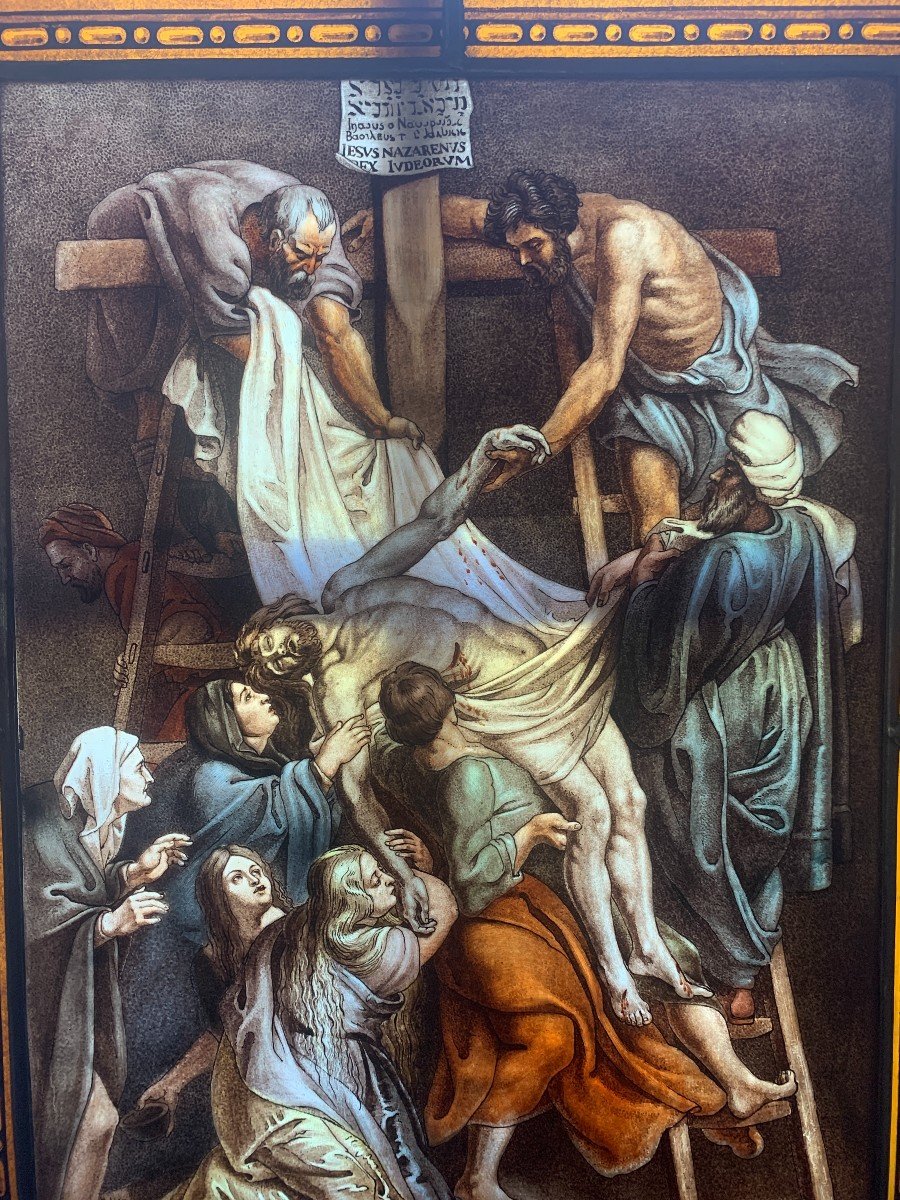
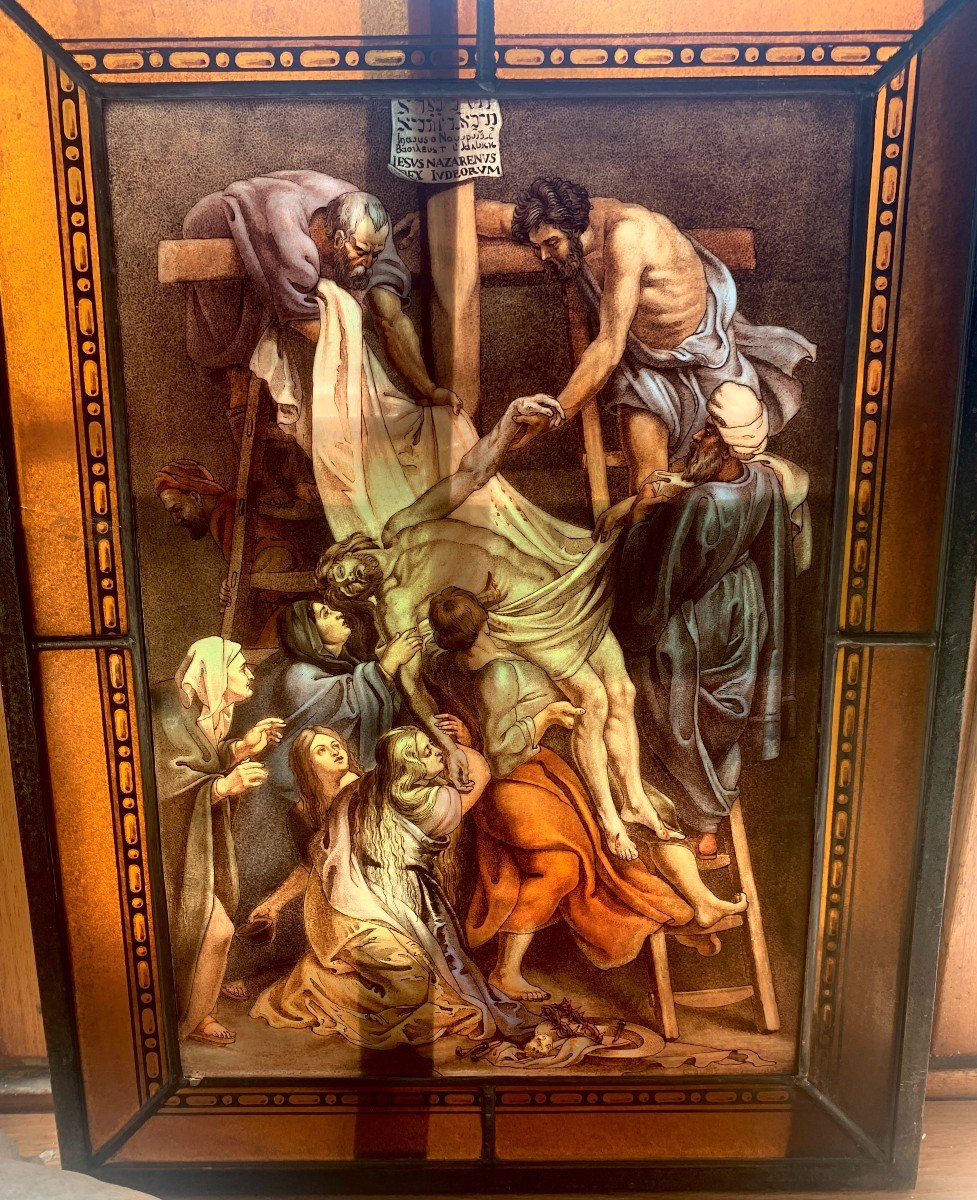
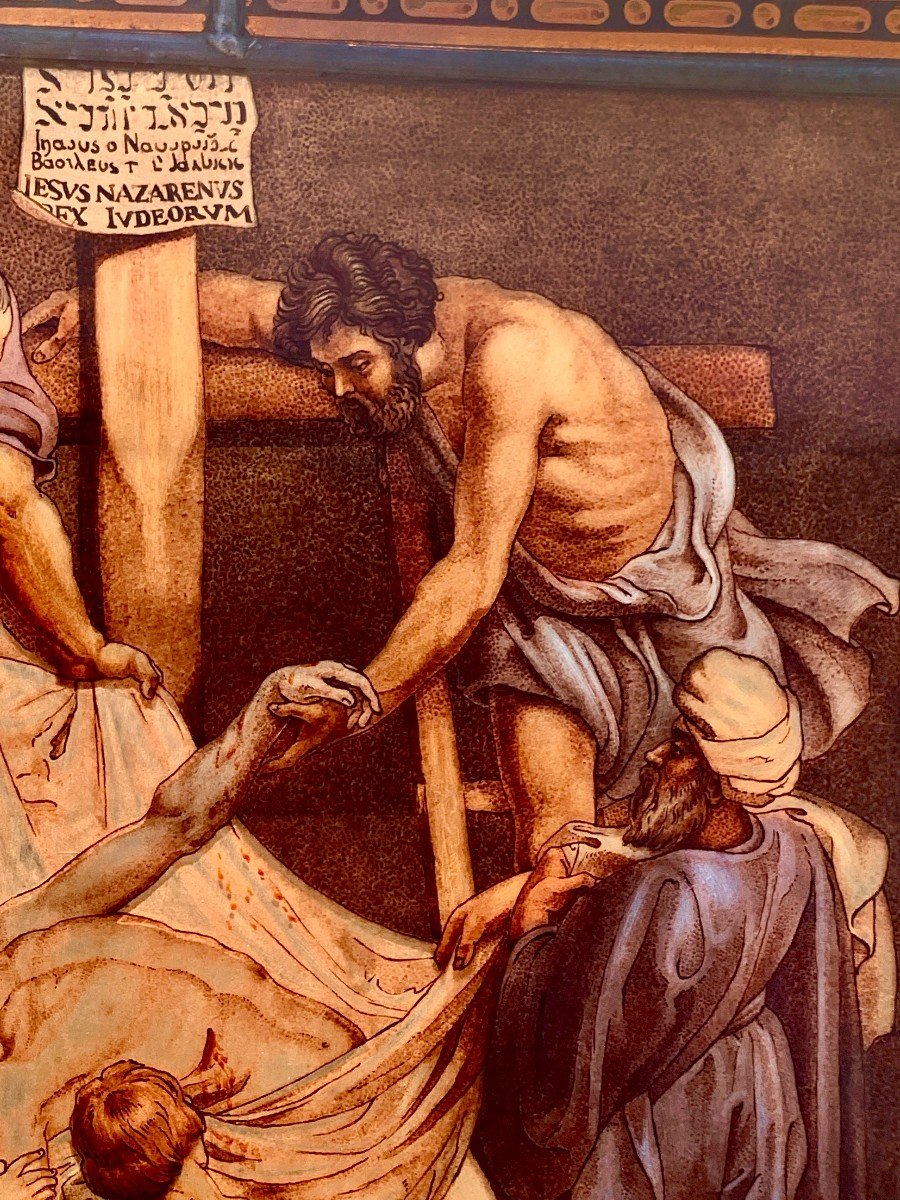
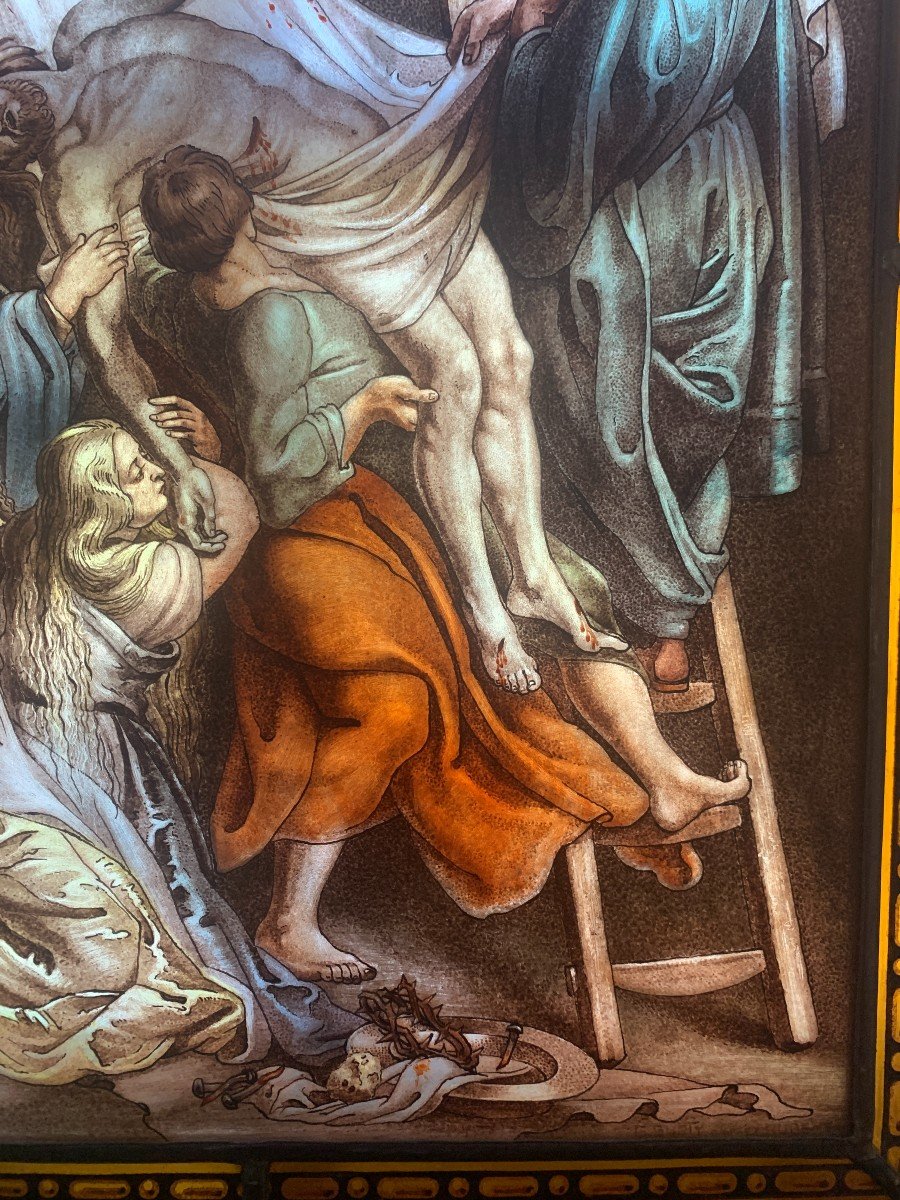
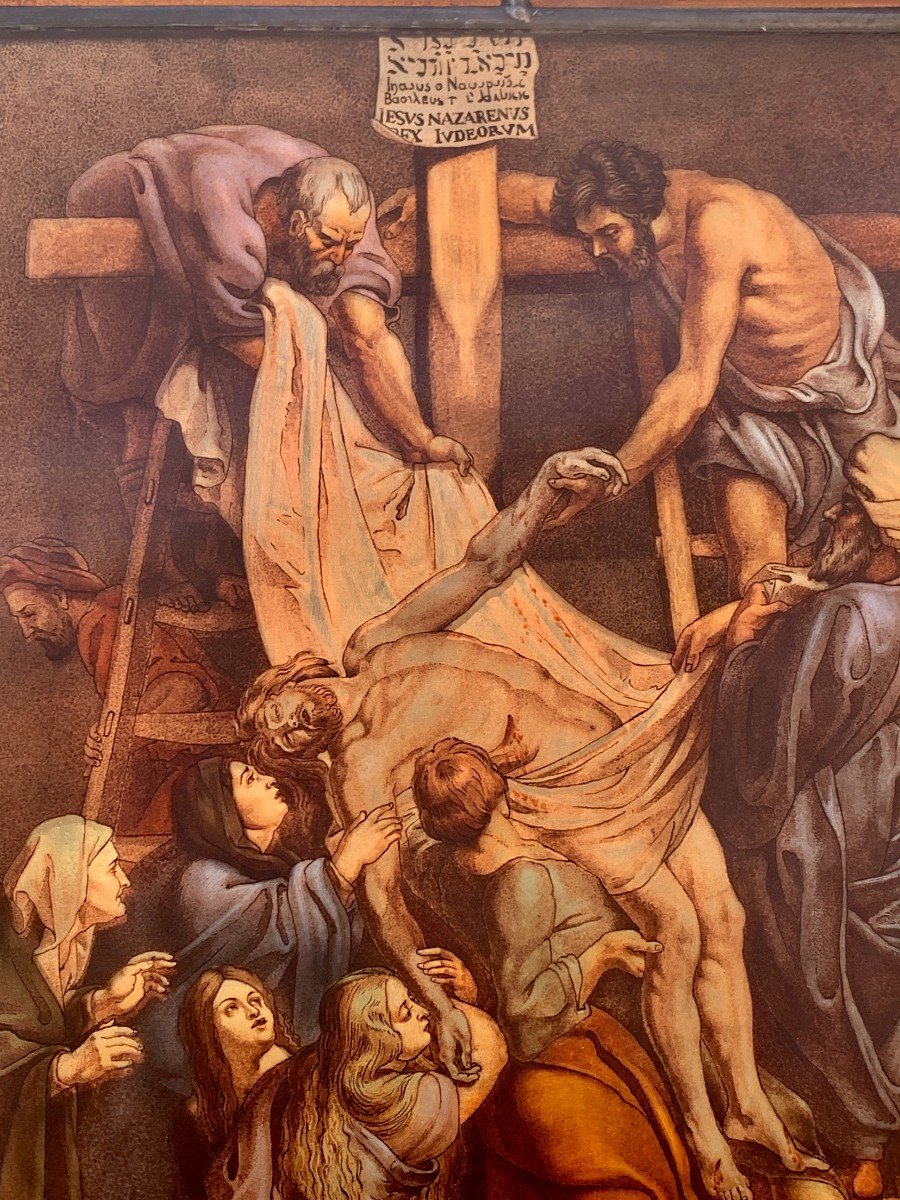
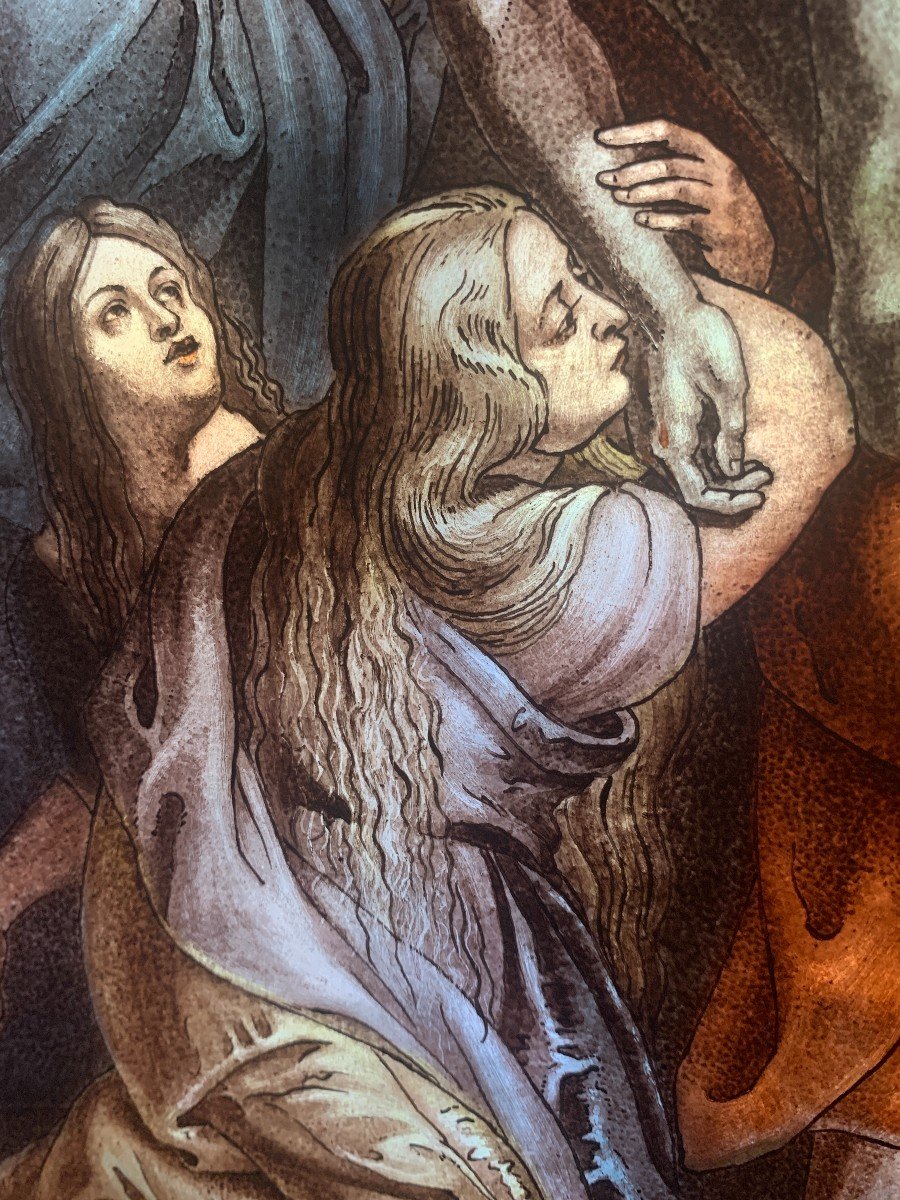
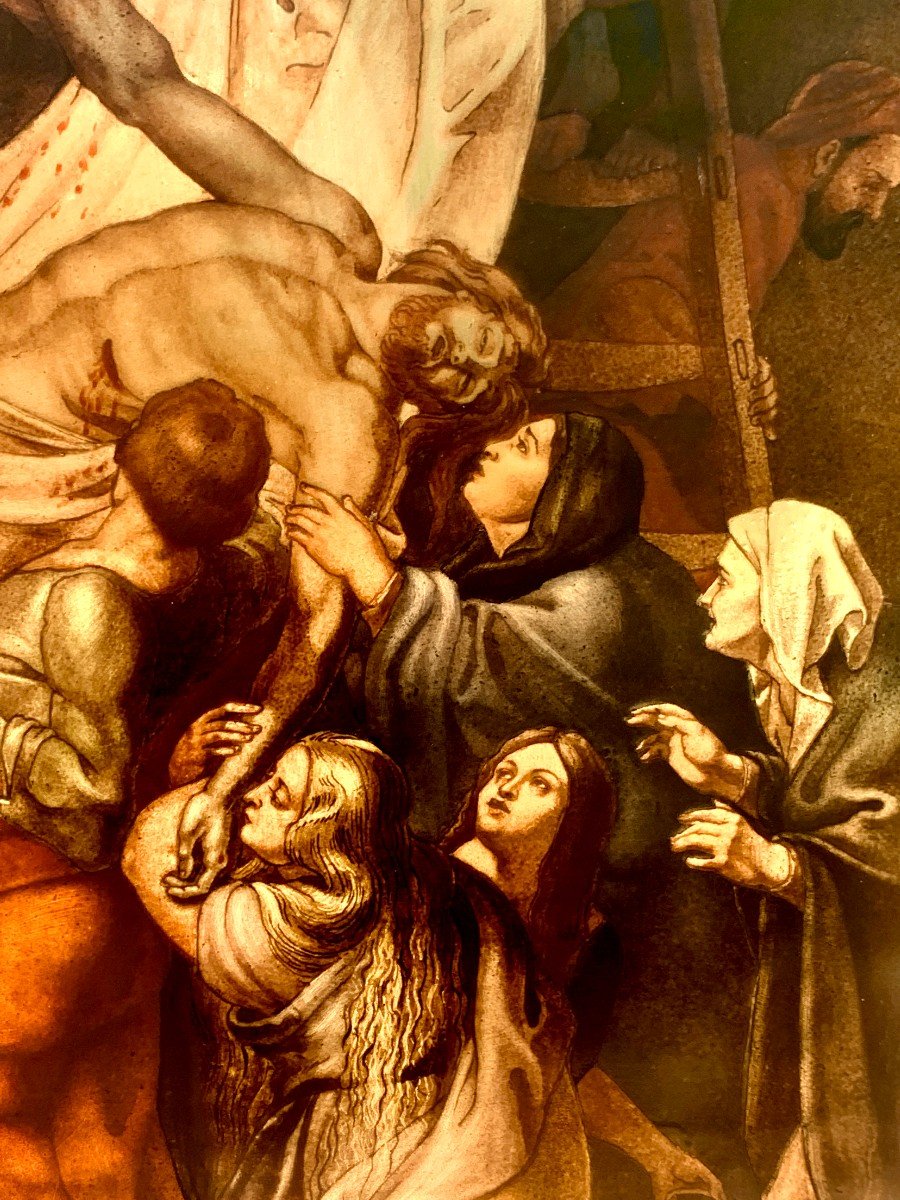
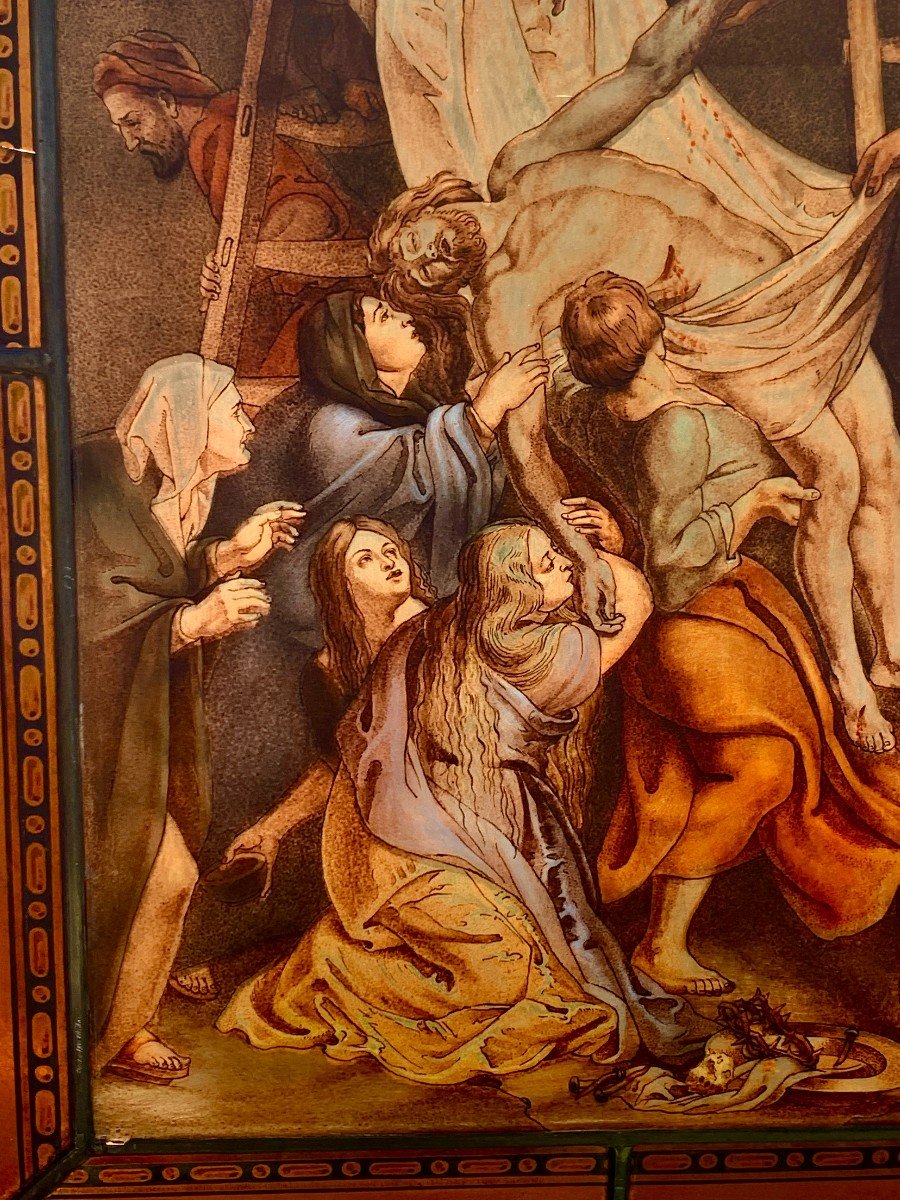
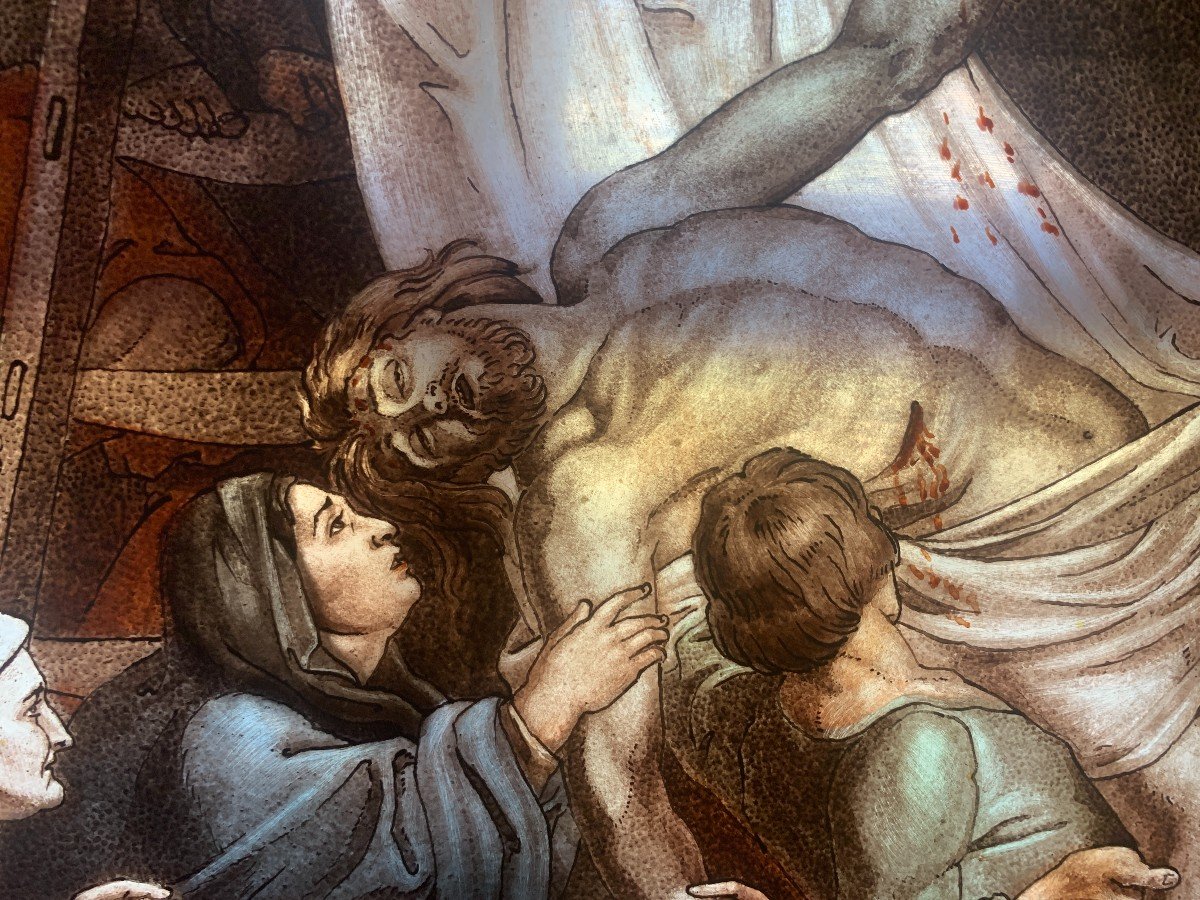
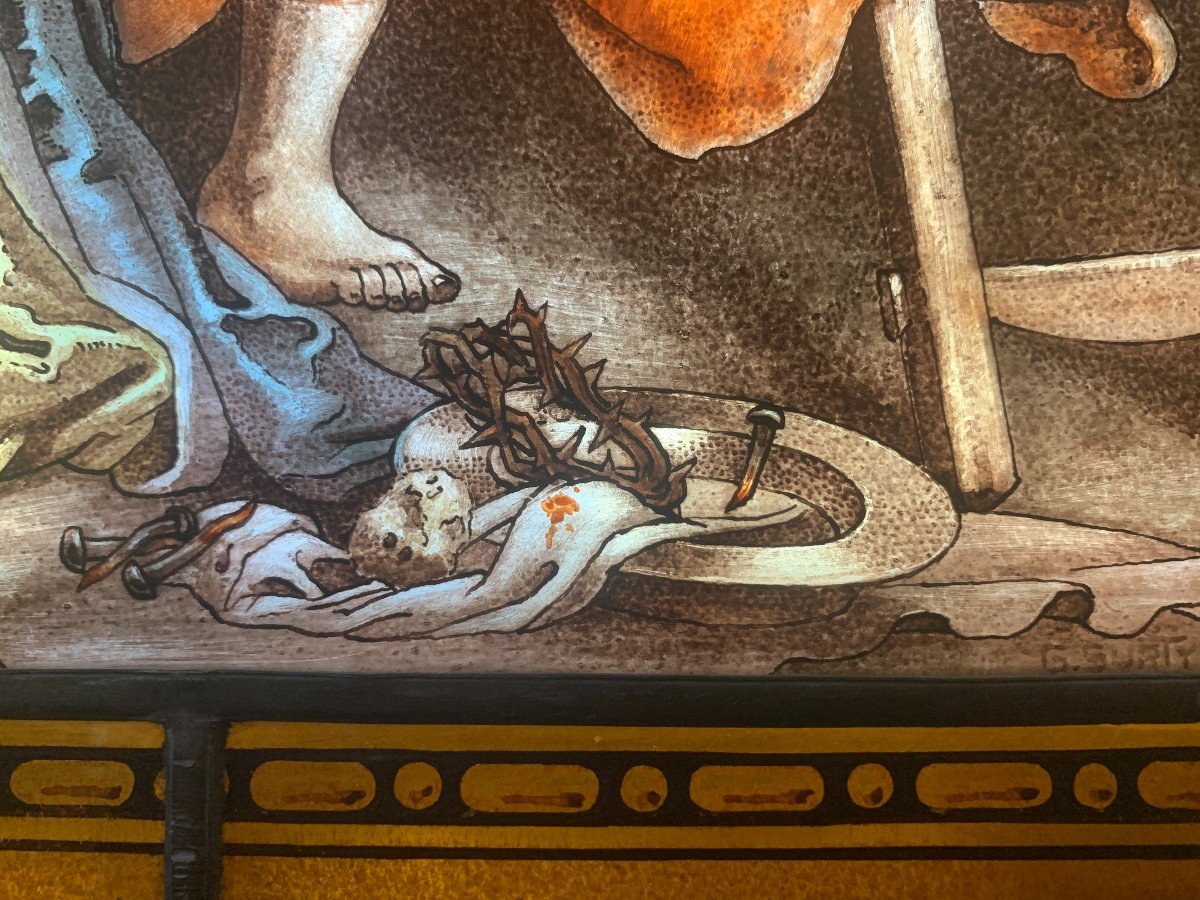
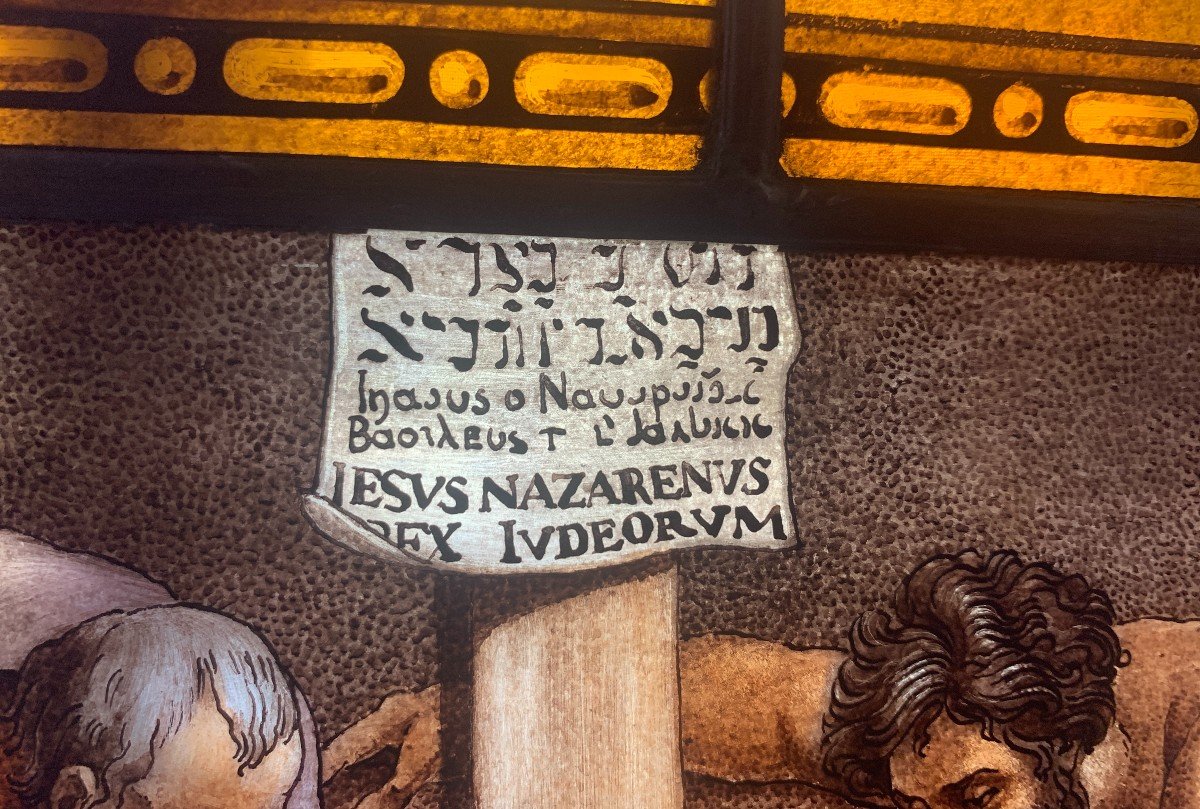
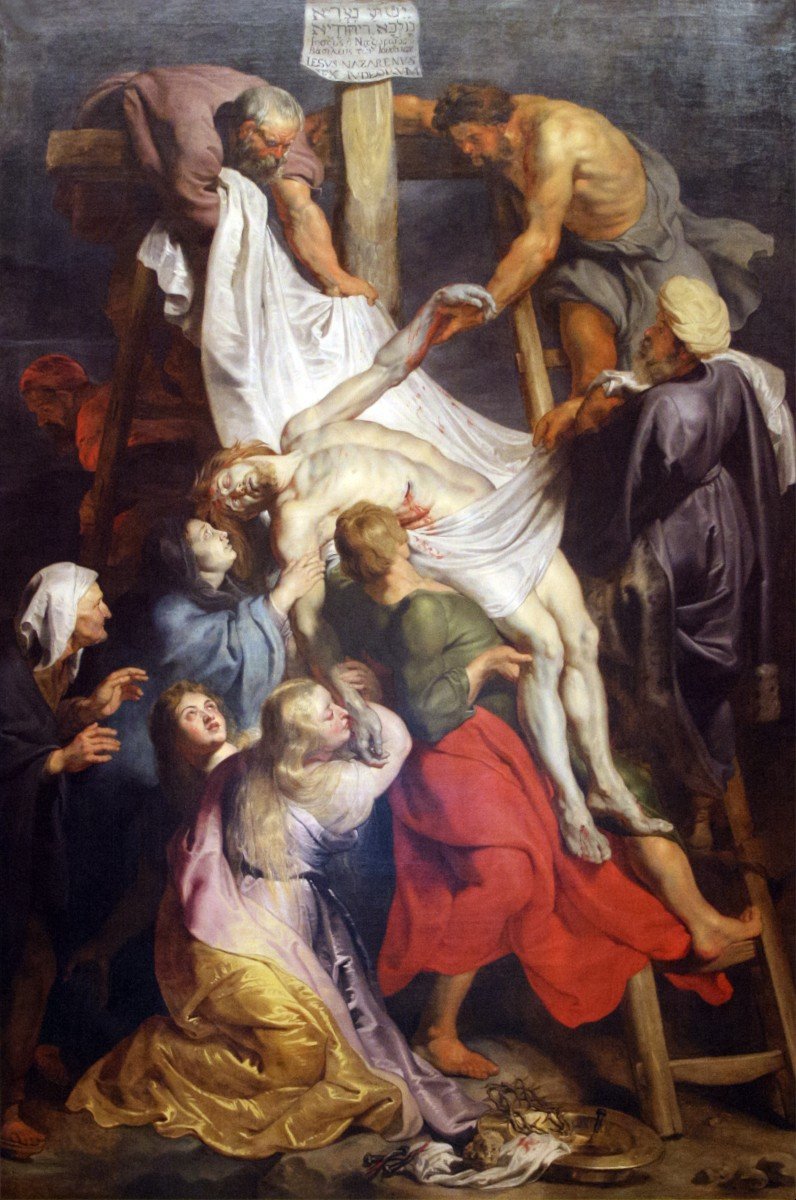















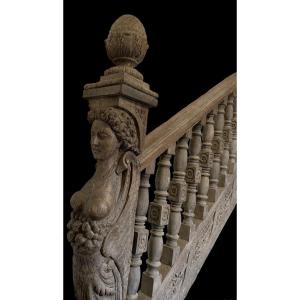
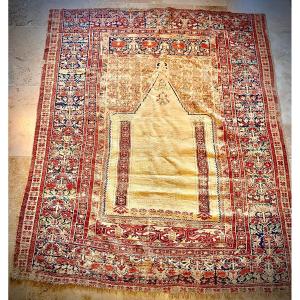
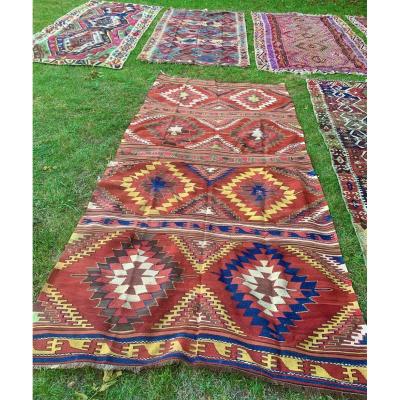


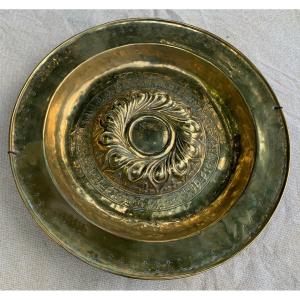
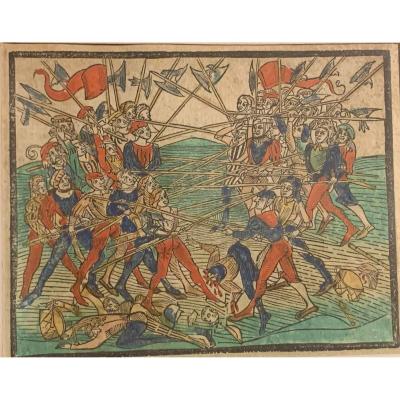
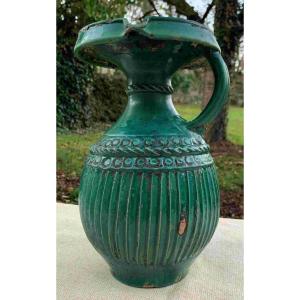
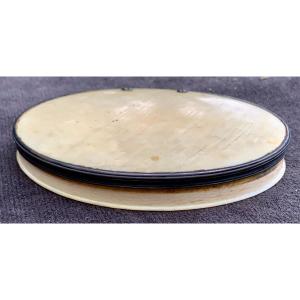

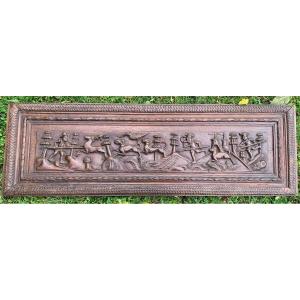


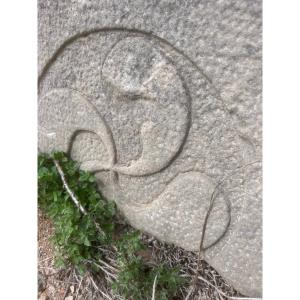

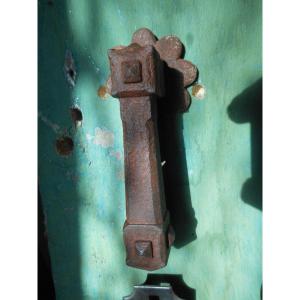

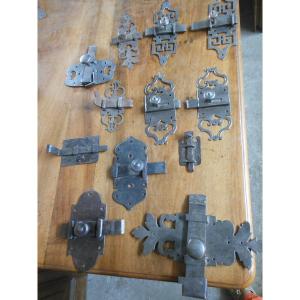



 Le Magazine de PROANTIC
Le Magazine de PROANTIC TRÉSORS Magazine
TRÉSORS Magazine Rivista Artiquariato
Rivista Artiquariato